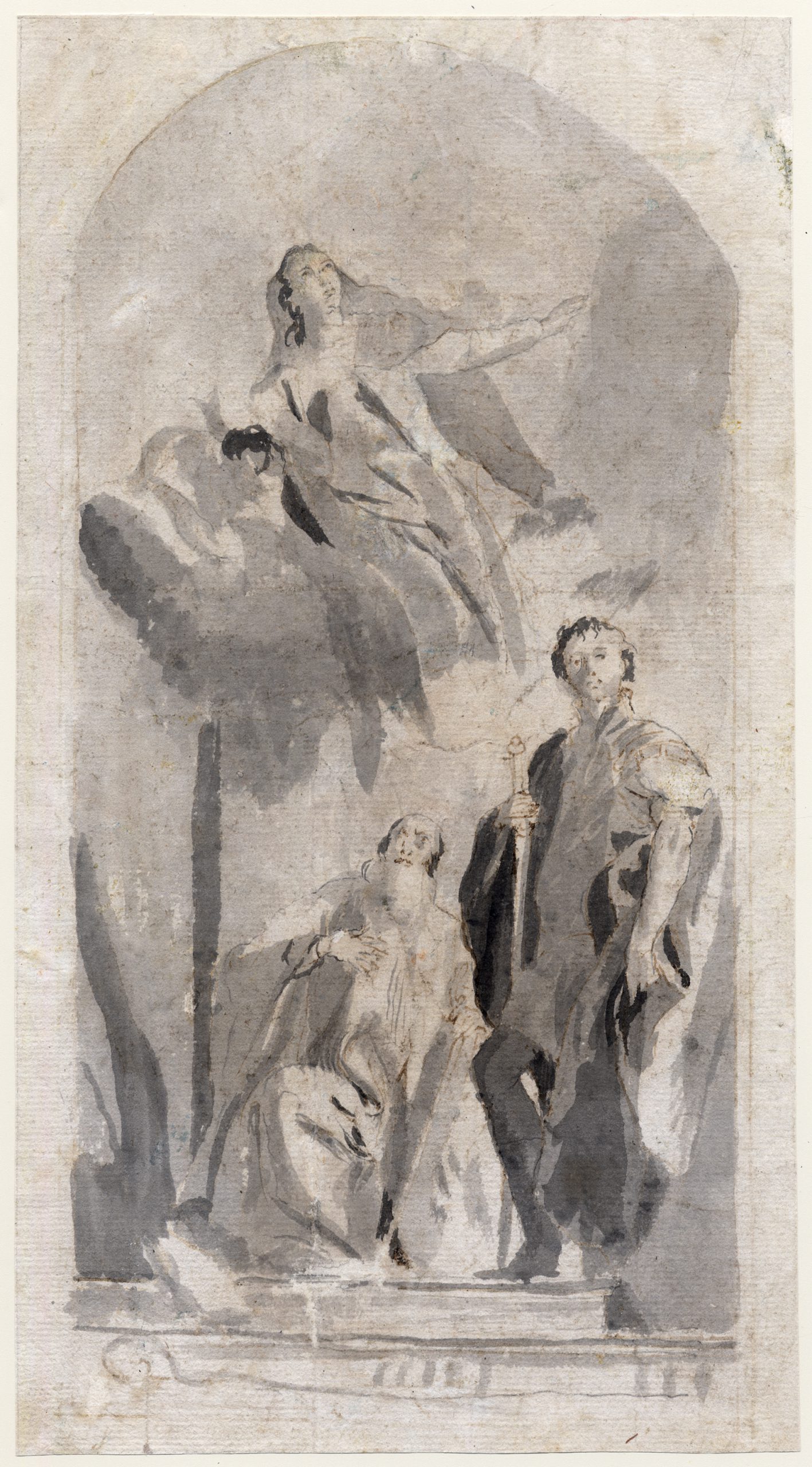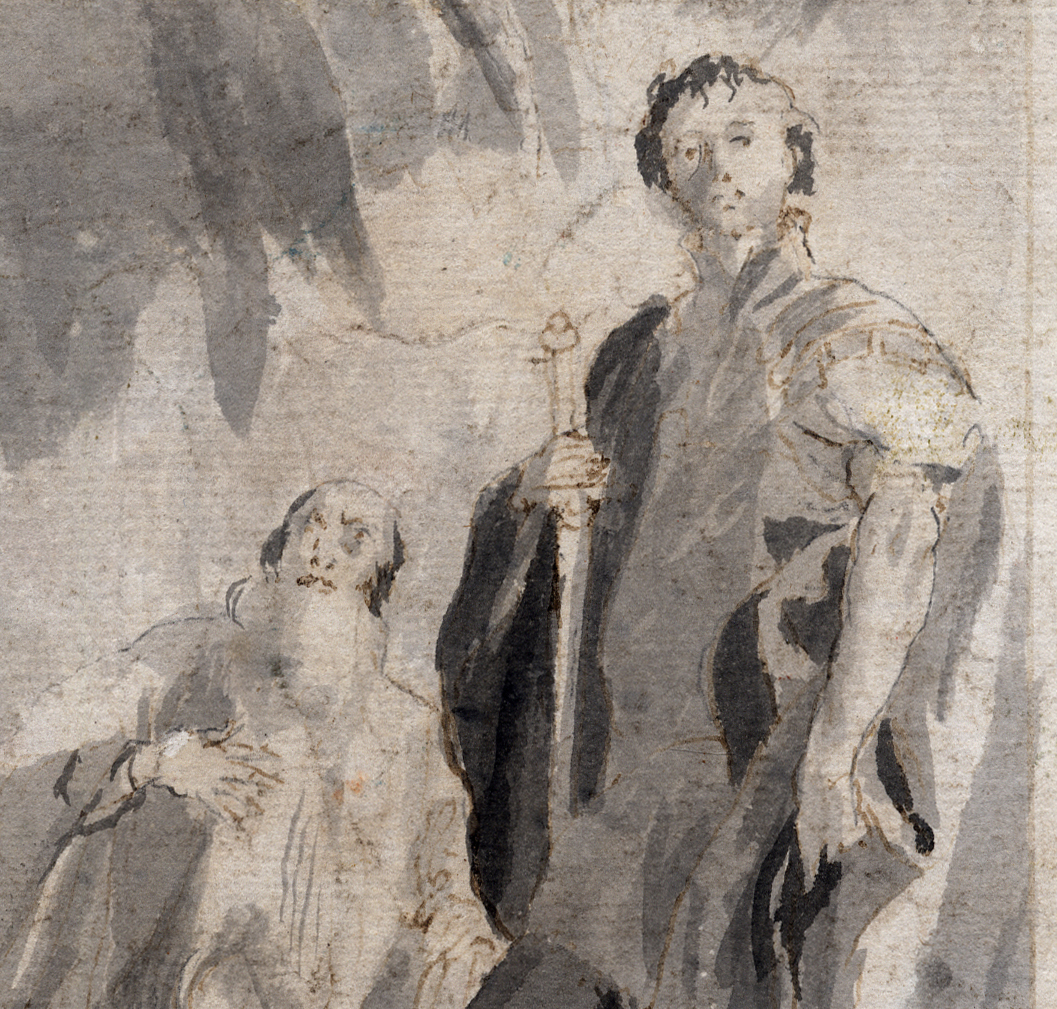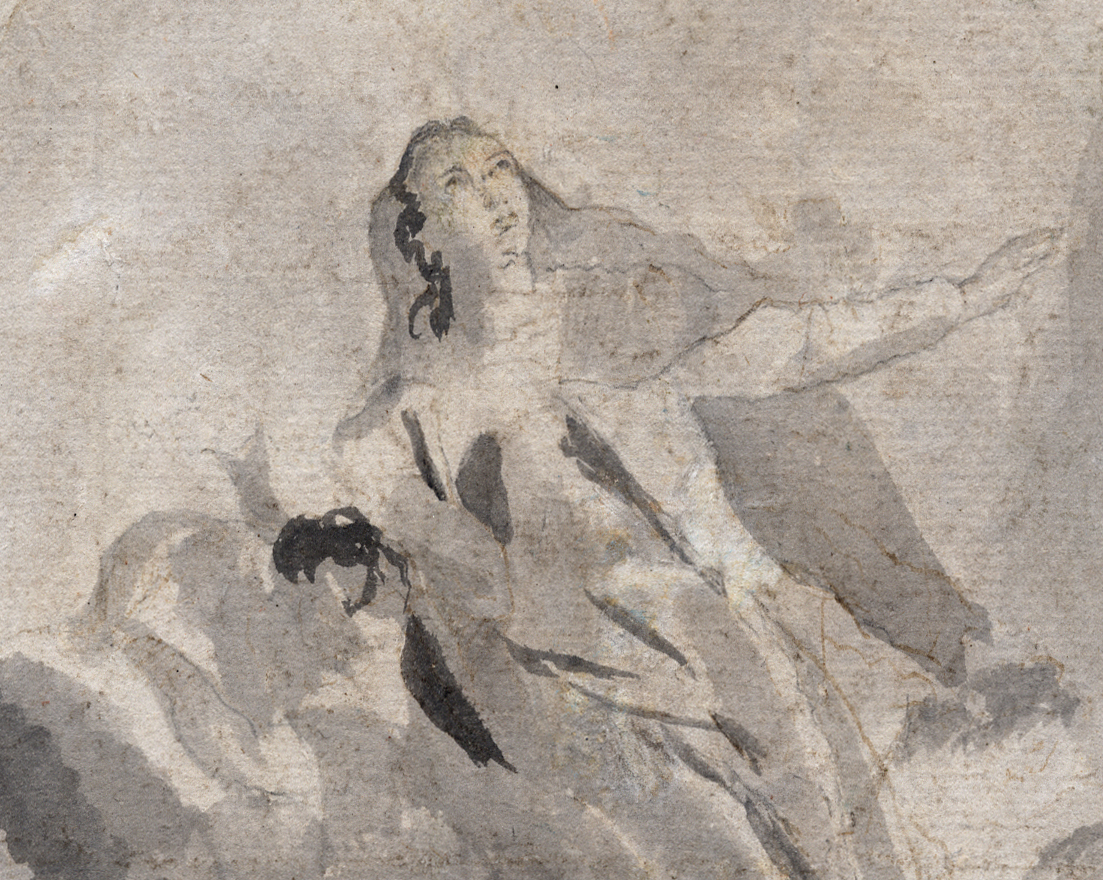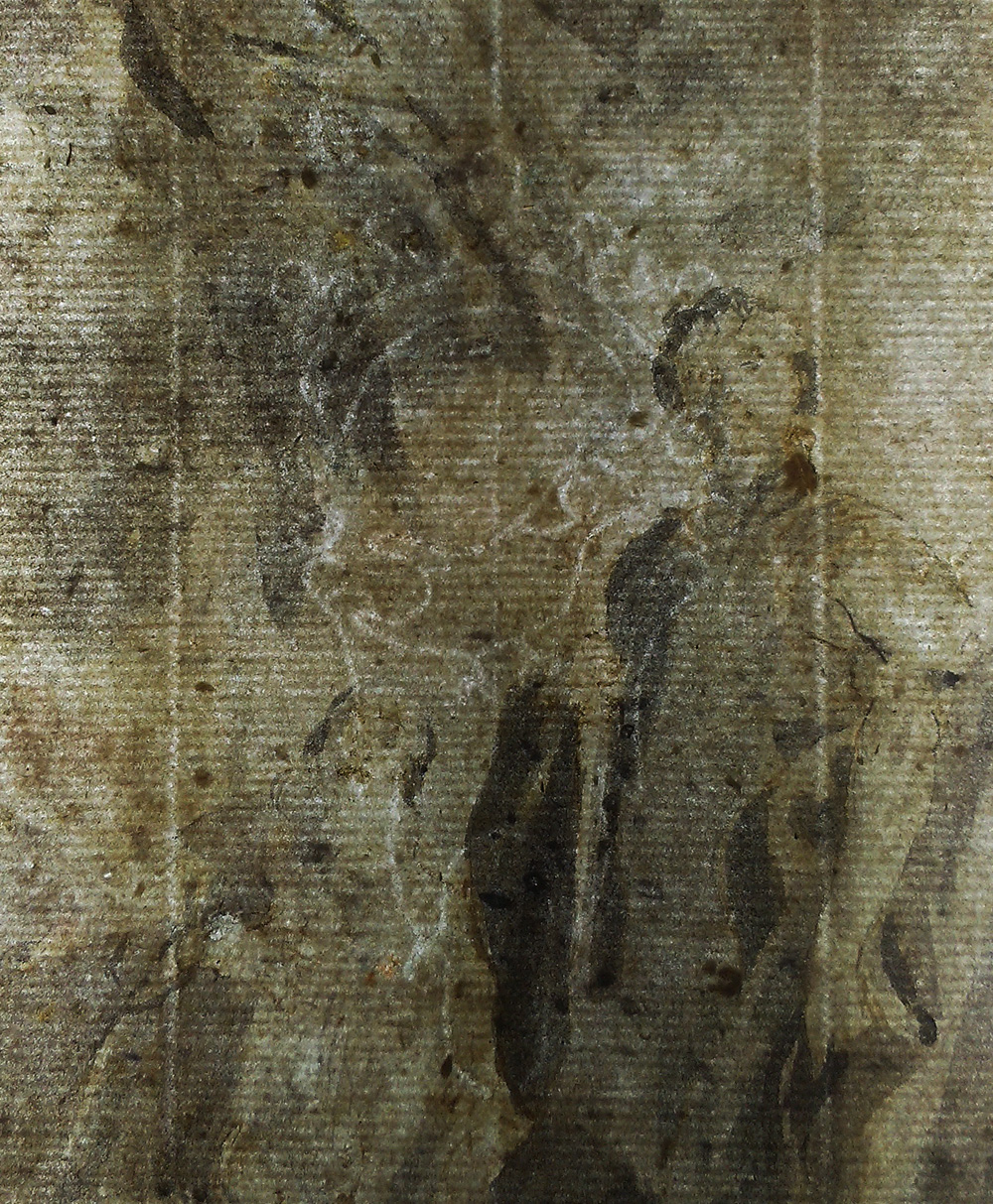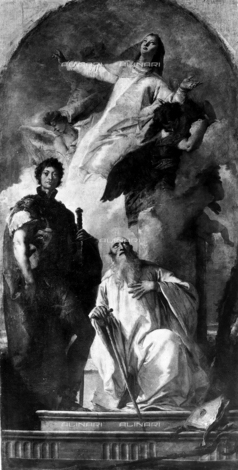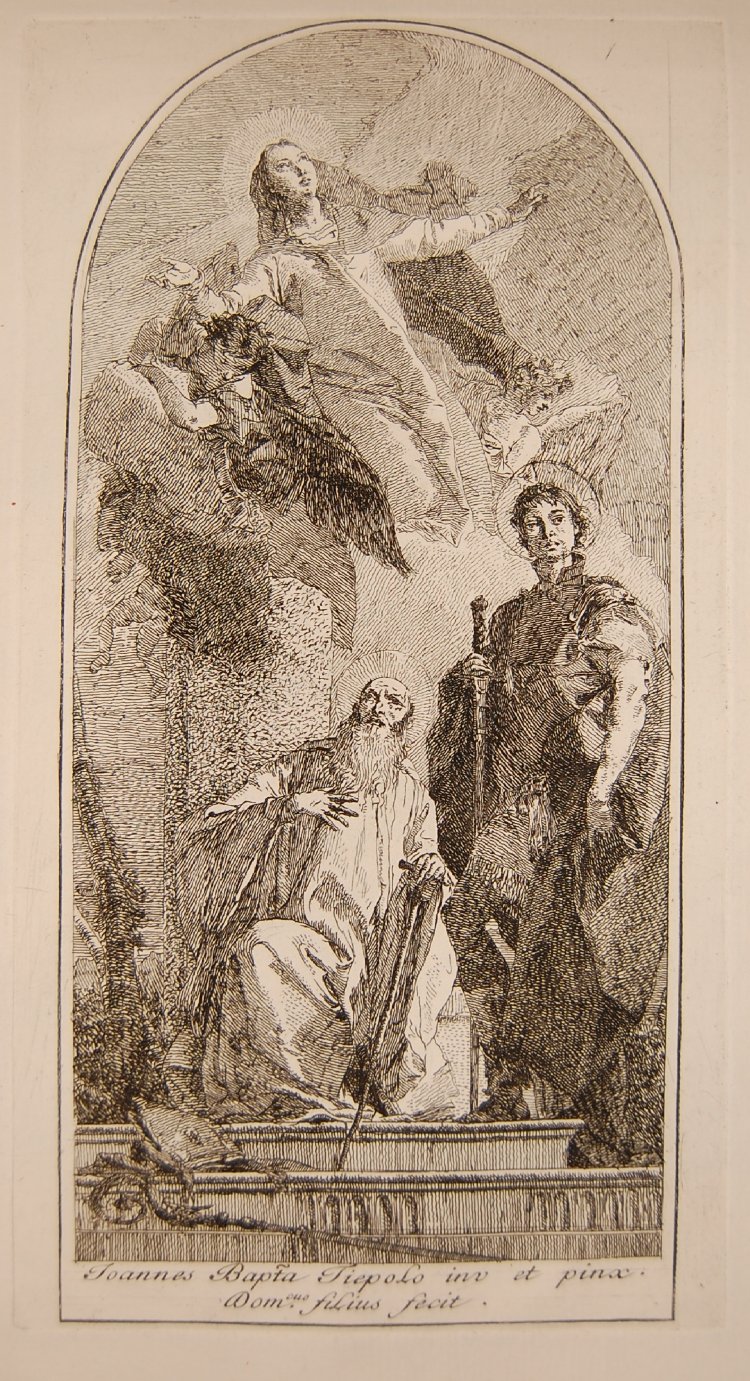LORENZO TIEPOLO (Venice 1736 – 1776 Madrid)
Lorenzo Tiepolo (Venice 1736 – 1776 Madrid)
The Virgin with St George and St Anthony Abbot
Graphite, pen and brown ink, grey wash, heightened with white, watermark bird in crowned shield, 263 x 143 mm (10.4 x 5.6 inch)
Executed c. 1755
Provenance
~ With Gallery Kekko, Lucerne, 1971 (as attributed to Antonio Guardi)
~ Pieter de Boer (1894–1974), Hergiswil, Switzerland
~ With Sabrina Förster, 1993
~ Barbara Piasecka Johnson (1937–2013)
Literature
Justyna Guze (ed.), The Masters of Drawing. Drawings from the Barbara Piasecka Johnson Collection (Mistrzowie Rysunku), Warsaw (Royal Castle), 2010-2011, pp. 168-69, repr. (colour)
Exhibited
~ Sammlung Pieter de Boer: holländische und italienische Meisterzeichnungen, 15.-19. Jahrhundert, Düsseldorf (Galerie Sabrina Förster) 1993, pp. 114-15, cat. no. 54, repr.
~ The Masters of Drawing. Drawings from the Barbara Piasecka Johnson Collection (Mistrzowie Rysunku), Warsaw (Royal Castle), 2010-2011, catalogue ed. by Justyna Guze, p. 168
***
Lorenzo was the son of the giant of Venetian art of the 18th century, Giambattista Tiepolo (1696–1770); his mother was Cecilia Guardi, Francesco Guardi’s sister.1 He received his training in the family workshop in Venice and began to emerge as a recognizable artist around 1750, when Giambattista was at work on the frescoes in the Residenz at Würzburg, assisted by Lorenzo and his elder brother Giovanni Domenico (1727–1804). In 1762 he accompanied his father and brother to Madrid, where Giambattista died in 1770. Although Giandomenico returned to Venice, Lorenzo remained in Spain, attempting to be appointed court painter to Carlos III, although without success.
Lorenzo is best known as a draughtsman and printmaker, mainly producing prints after his father’s work.2 His drawings are mostly portraits and head studies, genre scenes and half-length studies of saints, allegorical figures and expressive types, frequently executed in pastel. A core group has been established, based on early inscriptions on drawings. Lorenzo has long been considered a relatively minor artist. The judgement of the art historian Giuseppe Fiocco (1884–1971) is typical: ‘a little master who was heir to too great a name’. His work has however been subject to a more favourable evaluation in recent decades – he has even been termed a ‘lone genius’ as a pastellist recently by Neil Jaffares, comparing him to Liotard.
This freely drawn sheet was identified as a work by Lorenzo Tiepolo by the Tiepolo scholar George Knox, who dated it to around 1755.3 Knox noted the relationship to a painting by Giambattista of the same subject, in the Spalletti-Trivelli collection, Rome (fig.)4 which was etched by Giandomenico (fig.).5 Knox speculated that our drawing was produced in connection with the etching, as it corresponds in dimensions and also in the direction: both drawing and etching are in mirror-image to the painting. In fact, the outlines of the drawing are traced on the verso, which would indeed indicate a direct connection to the etching, which could have been a communal work by Giandomenico and Lorenzo.
SOLD
1. For the artist, see Giandomenico Romanelli and Filippo Pedrocco, Lorenzo Tiepolo e il suo tempo, exh. cat. Venice (Villa Ceresa) 1997-98 and Giandomenico Romanelli and Filippo Pedrocco, Lorenzo Tiepolo 1736–1776, exh. cat. Madrid (Museo Nacional del Prado) 1999.
2. See for instance Suzanne Boorsch and John Marciari (eds.), Master Drawings from the Yale University Art Gallery, New Haven 2006, pp. 201-02.
3. Correspondence 9 November 1992, quoted in Sammlung Pieter de Boer: holländische und italienische Meisterzeichnungen, 15.-19. Jahrhundert, Düsseldorf (Galerie Sabrina Förster) 1993, p. 114.
4. Antonio Morassi, A Complete Catalogue of the Paintings of Giovanni Battista Tiepolo, London 1962, p. 46, fig. 99.
5. An example is preserved in the Department of Prints and Drawings of the British Museum, etching, 252 x 135 mm, inv. no. 1907,0515.84.67; see Aldo Rizzi, Le acqueforti dei Tiepolo, Udine 1970, no. 11.
